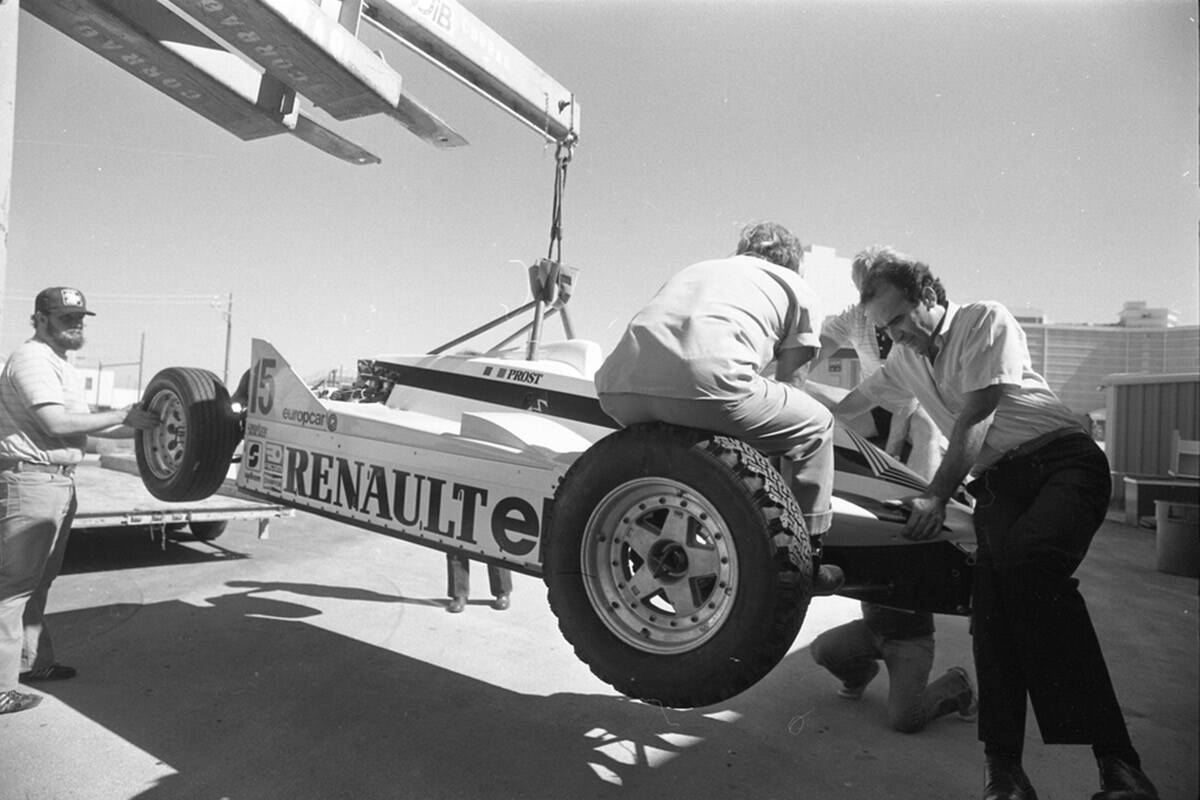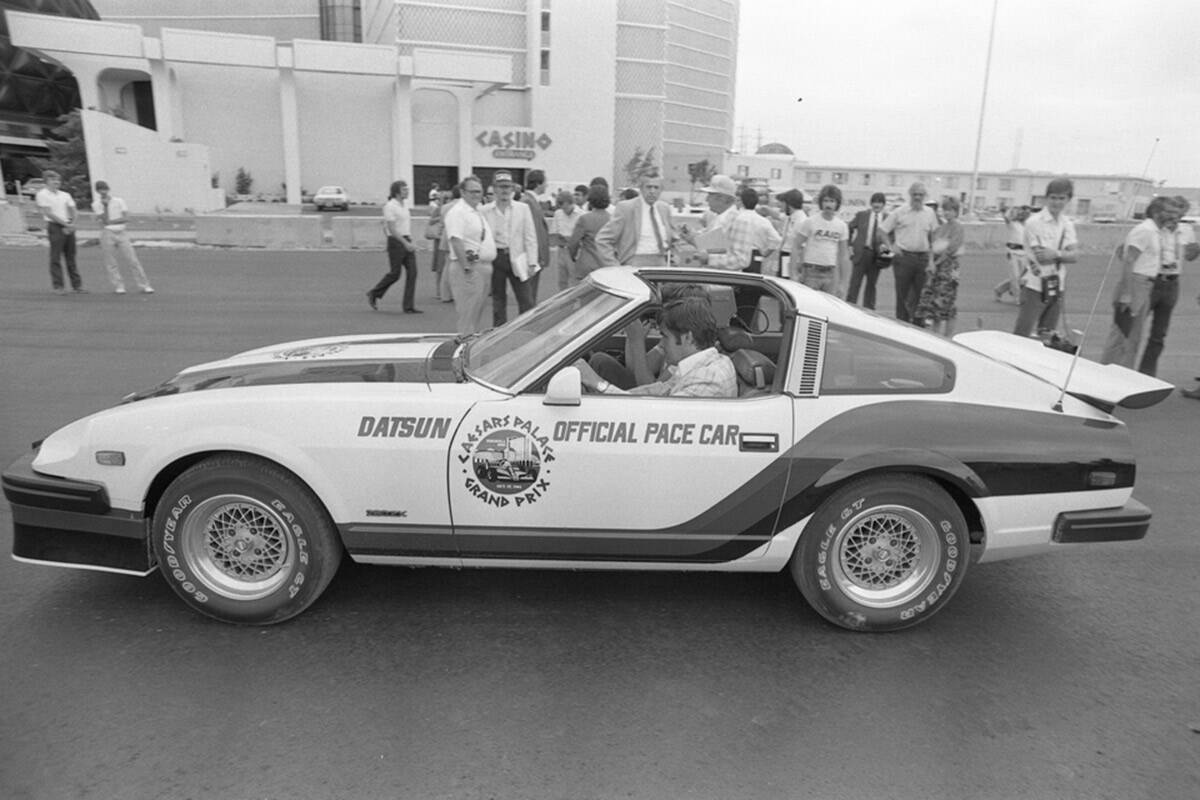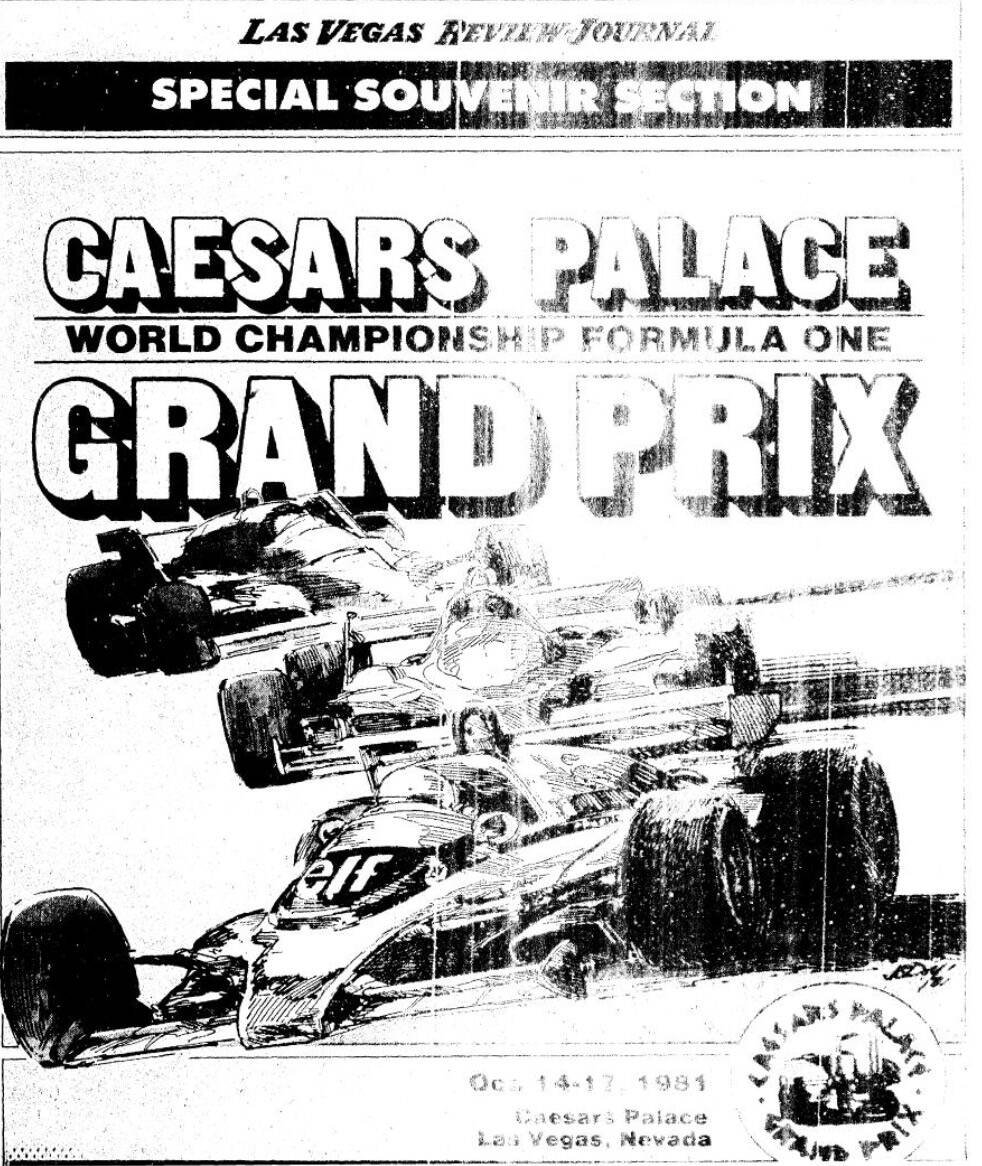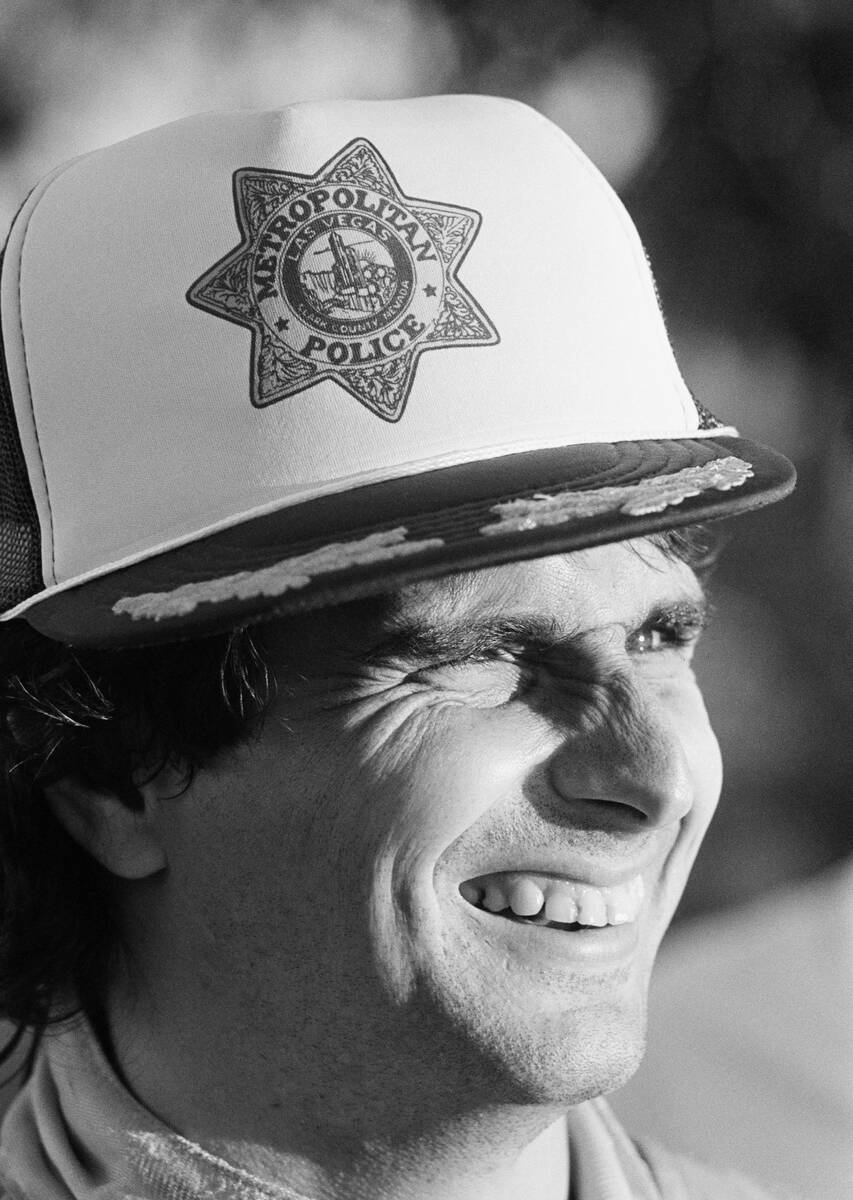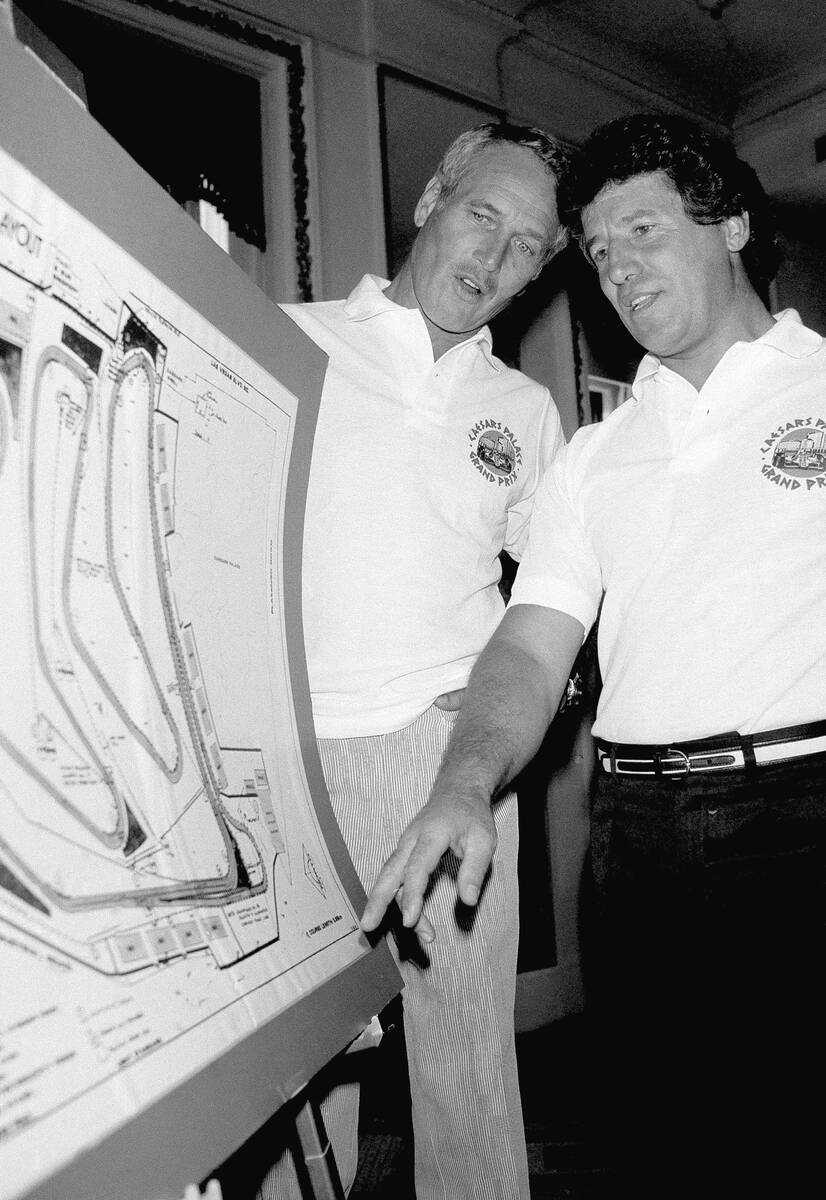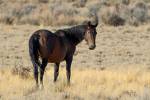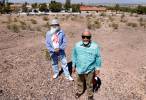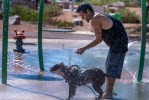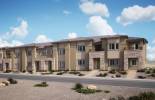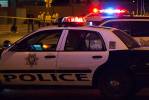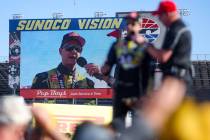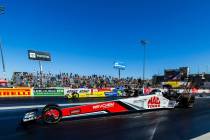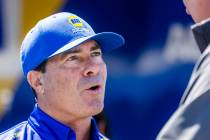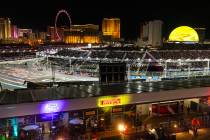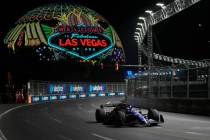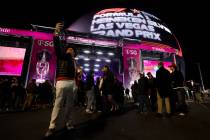Remembering the Caesars Palace Grand Prix as F1 returns to Las Vegas
Randy Cannon can still imagine the sounds of V6 engines echoing off Blue Diamond Hill.
Cannon is a Las Vegas motor sports historian now. He’s written two books, including “Caesars Palace Grand Prix: Las Vegas, Organized Crime and the Pinnacle of Motorsport.” He attended the 1981 Caesars Palace Grand Prix, Formula One’s first major attempt to bring its races to Las Vegas.
Back then, he was just a fan. He remembers watching in awe as his racing hero, Mario Andretti, flew past his seat in the pit straight grandstands, and revels in the fact that he had to pay only $50 for a ticket.
“Here I am, I’m just a knucklehead living in Vegas,” Cannon said. “I’m a car kid, and even then, this is the pinnacle of motor sports right here in front of me. … I was in heaven.”
Formula One will return to Southern Nevada for the inaugural Las Vegas Grand Prix on Saturday, more than 40 years after the Caesars Palace Grand Prix was run in 1981 and 1982.
Australian driver Alan Jones won the first edition of the race in a Williams, while Italian Michele Alboreto and his Tyrrell claimed the victory in 1982. Nelson Piquet (1981) and Keke Rosberg (1982) were anointed as world drivers champions at the events.
“It couldn’t have been a more perfect grand prix,” the Review-Journal’s Ed Vogel wrote about the inaugural Caesars Palace Grand Prix.
“The sun was shining, the temperature was mild and the largest crowd in Nevada history gathered to witness a racing duel between the finest Formula One drivers in the world.”
Yet by 1983, Formula One had departed. The Caesars Palace Grand Prix ran for the final time as an IndyCar race in 1984.
“As a casino event, the grand prix was a complete failure,” Bill Weinberger, a former Caesars vice president for casino marketing who was in charge of putting together the Caesars Palace Grand Prix, told Cannon for his book on the race. “Gamblers just weren’t interested in making a special trip to LV for an F1 race.”
The race came about in part because of issues facing the two other U.S. Grand Prix locations. Formula One had raced at the Watkins Glen Grand Prix course in upstate New York beginning in 1961 and in 1976 added the U.S. Grand Prix West — a street circuit in Long Beach, California.
Financial problems for Watkins Glen and threats to move the Long Beach race were constant throughout the late 1970s. The Caesars Palace Grand Prix was initially supposed to join the calendar for the 1980 season, but was delayed a year because of difficulty to find a place to build a track.
Watkins Glen finally capitulated after its 1980 race, and Weinberger capitalized, striking a deal with Formula One chief executive Bernie Ecclestone for the 1981 Caesars Palace Grand Prix. Initially, Weinberger hoped to run the track along a quarter mile of Las Vegas Boulevard, but by June 1981, ground still hadn’t been broken.
The track was eventually designed by longtime Las Vegas architect Anthony Marnell and built by Corrao Construction. The south section ran through the Caesars Palace property, while the north section winded through undeveloped Summa Corporation property. Chris Pook of the Long Beach Grand Prix Association was hired to oversee the development of the event.
In an attempt to squeeze a 2.5-mile circuit onto the Caesars Palace land, Weinberger traced his left hand, leading to the unique three-finger design of the track, according to Cannon. The track was F1-quality asphalt, but Caesars Palace did use it as a parking lot when the race wasn’t running.
The race had other issues. It ran counterclockwise, and Cannon said the European drivers didn’t like how many left turns it included. The 1982 race was significantly hotter, and driving through the former Summa Corporation section of the track kicked up lots of dust if a driver spun off the circuit. The two races never drew more than 38,000 viewers, Cannon said.
Cannon confirmed there were several attempts to bring Formula One back to Southern Nevada, and now, more than four decades later, the sport will return. As he imagines what the 2023 Las Vegas Grand Prix will look like running down the Strip, Cannon believes this is the race F1 always imagined.
“This layout was Bernie Ecclestone’s dream for Formula One,” Cannon said. “He wanted Formula One to race along the metropolitan skylines of the globe.”
Contact reporter Andy Yamashita at ayamashita@reviewjournal.com. Follow @ANYamashita on X.
Up next
What: Las Vegas Grand Prix
When: 10 p.m. Saturday
Where: The Strip
TV: ESPN
Favorite: Max Verstappen -500



